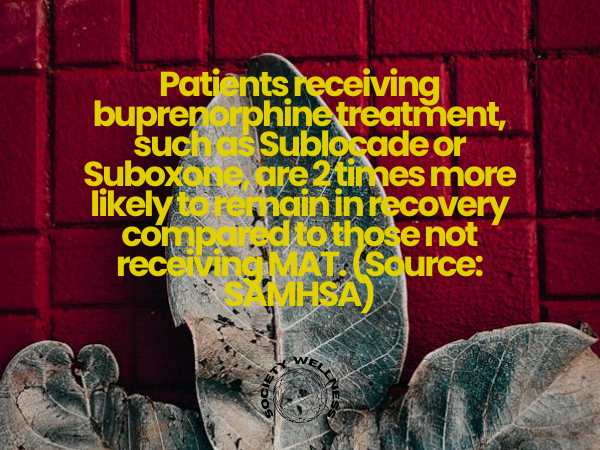Opioid addiction continues to affect millions of people in the U.S., including LGBTQ+ individuals, who face unique challenges due to discrimination, minority stress, and barriers to treatment. Medications like Sublocade and Suboxone have transformed the way opioid addiction is treated, making recovery achievable by reducing cravings and managing withdrawal symptoms. However, each medication offers distinct benefits, making it crucial to understand their differences to choose the best fit for your recovery journey.
At LGBTQ Addiction Centers, we are dedicated to providing affirming, inclusive care tailored to the unique needs of LGBTQ+ individuals. Through programs such as LGBTQ Partial Hospitalization Treatment, LGBTQ Opiates Addiction Treatment, and LGBTQ Mental Health Programs, we aim to empower individuals to overcome addiction and build a foundation for long-term recovery.
Understanding Sublocade and Suboxone: What Are They?
Both Sublocade and Suboxone are part of Medication-Assisted Treatment (MAT), an evidence-based approach to treating opioid use disorder (OUD). They work by addressing the physical and psychological aspects of addiction, enabling individuals to focus on recovery without being overwhelmed by cravings or withdrawal.
What Is Sublocade?
Sublocade is a long-acting injectable form of buprenorphine, administered monthly by a healthcare provider. It is designed for individuals with moderate to severe opioid addiction who have already stabilized on oral buprenorphine.
- How It Works:
Sublocade delivers a continuous dose of buprenorphine over 30 days, preventing cravings and withdrawal symptoms by partially activating opioid receptors in the brain. - Key Features of Sublocade:
- Administered once a month, eliminating the need for daily dosing.
- Provides steady, consistent relief from cravings and withdrawal symptoms.
- Reduces the risk of misuse compared to oral medications.
- Who Sublocade Is Best For:
- Individuals who are stabilized on oral buprenorphine (e.g., Suboxone).
- Those seeking a low-maintenance, long-term treatment option.
What Is Suboxone?
Suboxone is a combination of buprenorphine and naloxone, available as a sublingual (under-the-tongue) tablet or film. Naloxone is included to discourage misuse by causing withdrawal symptoms if the medication is injected rather than taken as prescribed.
- How It Works:
Suboxone reduces cravings and withdrawal symptoms by partially activating opioid receptors (via buprenorphine) while naloxone prevents abuse. - Key Features of Suboxone:
- Taken daily, allowing for more flexibility and control over treatment.
- Naloxone component helps deter misuse.
- Often used as an initial treatment for opioid addiction.
- Who Suboxone Is Best For:
- Individuals in the early stages of recovery.
- Those who prefer the flexibility of daily dosing.
- People transitioning from active opioid use to medication-assisted treatment.
Key Differences Between Sublocade and Suboxone
| Aspect | Sublocade | Suboxone |
|---|---|---|
| Administration | Monthly injection by a healthcare provider | Daily oral tablet or film |
| Ingredients | Buprenorphine (extended-release) | Buprenorphine + Naloxone |
| Frequency | Once a month | Daily |
| Risk of Misuse | Very low | Moderate |
| Ideal Candidates | Stabilized individuals ready for long-term treatment | Individuals in early recovery or requiring flexibility |
The Science Behind Medication-Assisted Treatment (MAT)
How Buprenorphine Works:
Buprenorphine is a partial opioid agonist, meaning it partially activates opioid receptors in the brain. This helps alleviate cravings and withdrawal symptoms without producing the full “high” of opioids like heroin or fentanyl.
How Naloxone Works:
Naloxone is an opioid antagonist, meaning it blocks opioid receptors. When taken as prescribed, naloxone remains inactive. However, if Suboxone is misused (e.g., injected), naloxone becomes active and induces withdrawal symptoms, discouraging misuse.
Benefits of MAT:
- Reduces Cravings:
- Both Sublocade and Suboxone reduce the intense cravings that often lead to relapse.
- Prevents Withdrawal Symptoms:
- Withdrawal can be physically and emotionally debilitating, but MAT helps manage these symptoms.
- Improves Retention in Treatment:
- Individuals on MAT are more likely to stay engaged in their recovery programs.
- Supports Long-Term Recovery:
- By stabilizing the physical aspects of addiction, MAT allows individuals to focus on therapy, lifestyle changes, and emotional healing.
Opioid Addiction in the LGBTQ+ Community
Higher Rates of Opioid Misuse
The LGBTQ+ community is disproportionately affected by substance use disorders, including opioid addiction. Factors such as minority stress, discrimination, and trauma often drive higher rates of substance misuse.
- 39% of LGBTQ+ adults report illicit drug use, compared to 17% of the general population. (Source: SAMHSA)
- LGBTQ+ individuals are 2-3 times more likely to develop opioid use disorder. (Source: NIDA)
Unique Challenges for LGBTQ+ Individuals:
- Minority Stress:
- Discrimination and stigma create chronic stress, increasing vulnerability to substance use.
- Co-Occurring Mental Health Conditions:
- Higher rates of anxiety, depression, and PTSD exacerbate substance use.
- Barriers to Treatment:
- Many LGBTQ+ individuals face discrimination in healthcare settings, discouraging them from seeking help.

How LGBTQ Addiction Centers Address Opioid Addiction
At LGBTQ Addiction Centers, we offer affirming care that addresses the unique challenges of opioid addiction within the LGBTQ+ community. Our programs integrate medication-assisted treatment with evidence-based therapies to promote comprehensive recovery.
Key Programs:
- LGBTQ Partial Hospitalization Treatment (PHP):
- Provides structured, intensive care with daily therapy and medical oversight.
- LGBTQ Intensive Outpatient Program (IOP):
- Combines flexibility with effective treatment, including MAT.
- LGBTQ Outpatient Treatment Program (OP):
- Long-term support for maintaining sobriety and managing triggers.
- LGBTQ Opiates Addiction Treatment:
- Specialized care for individuals struggling with opioid use disorder, incorporating medications like Sublocade and Suboxone.
- LGBTQ Mental Health Programs:
- Addresses co-occurring conditions such as anxiety, depression, or PTSD alongside addiction treatment.
Sublocade vs. Suboxone: Which Is Right for You?
Choosing between Sublocade and Suboxone depends on your stage of recovery, treatment goals, and personal preferences.
Consider Sublocade If:
- You’ve stabilized on daily buprenorphine and want a low-maintenance option.
- You prefer avoiding the responsibility of daily medication.
- You want to reduce the risk of misuse or forgetting doses.
Consider Suboxone If:
- You’re in the early stages of recovery and need flexibility.
- You prefer managing your treatment with daily dosing.
- You’re transitioning from active opioid use and require an accessible option.
Conclusion
Sublocade and Suboxone are both highly effective tools for managing opioid addiction, but they serve different needs. For LGBTQ+ individuals, accessing affirming care that addresses the unique challenges of addiction and identity is critical for achieving lasting recovery.
At LGBTQ Addiction Centers, we are here to support you every step of the way. Through tailored programs like LGBTQ Opiates Addiction Treatment, LGBTQ Partial Hospitalization Treatment, and LGBTQ Mental Health Programs, we empower individuals to heal, grow, and thrive.
Contact us today at(888) 598-9510 to learn more about our services and take the first step toward a brighter, substance-free future. Together, we can help you reclaim your life and live authentically.
FAQ on Sublocade vs. Suboxone
What is Sublocade?
Sublocade is a monthly injectable form of buprenorphine used to treat opioid addiction. It provides continuous relief from cravings and withdrawal symptoms.
What is Suboxone?
Suboxone is a daily medication combining buprenorphine and naloxone, designed to manage opioid cravings and withdrawal while preventing misuse.
How are Sublocade and Suboxone different?
Sublocade is a long-acting injection administered monthly, while Suboxone is a daily sublingual film or tablet. Sublocade reduces the need for daily adherence, whereas Suboxone offers more flexibility for early-stage recovery.
Which medication has a lower risk of misuse?
Sublocade has a lower risk of misuse because it is administered by a healthcare provider and provides a steady release of medication over 30 days. Suboxone includes naloxone to deter misuse but still carries a moderate risk if not taken as prescribed.
Who is Sublocade best for?
Sublocade is ideal for individuals who have stabilized on oral buprenorphine and are looking for a long-term, low-maintenance treatment option.
Who is Suboxone best for?
Suboxone is often recommended for individuals in the early stages of recovery or those transitioning from active opioid use to medication-assisted treatment.
Are Sublocade and Suboxone effective for LGBTQ+ individuals?
Yes, both medications are highly effective for treating opioid addiction in LGBTQ+ individuals, especially when combined with affirming and inclusive care tailored to address unique challenges.

